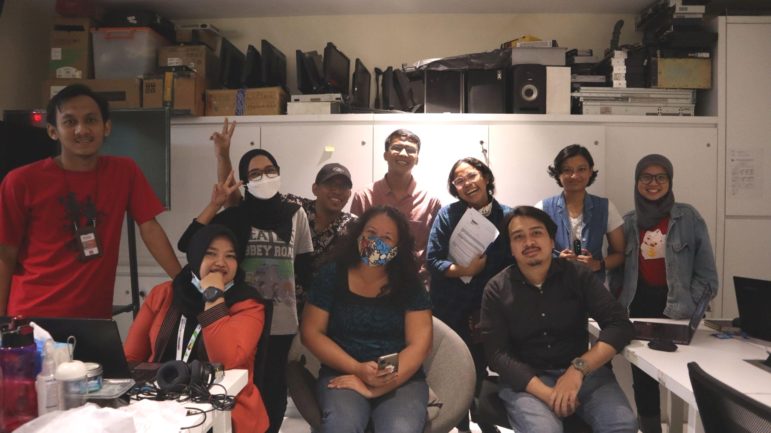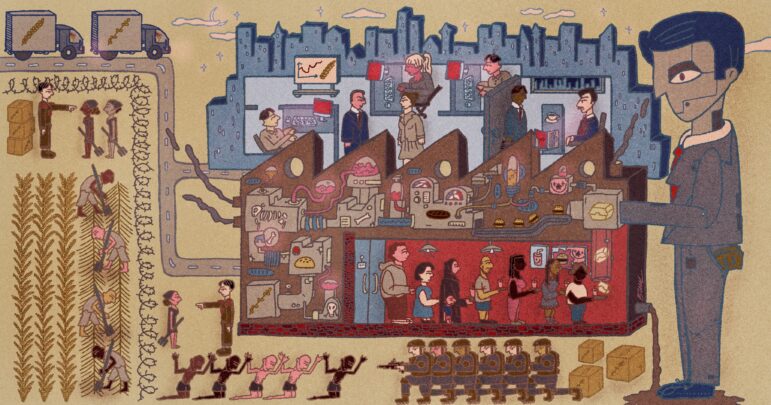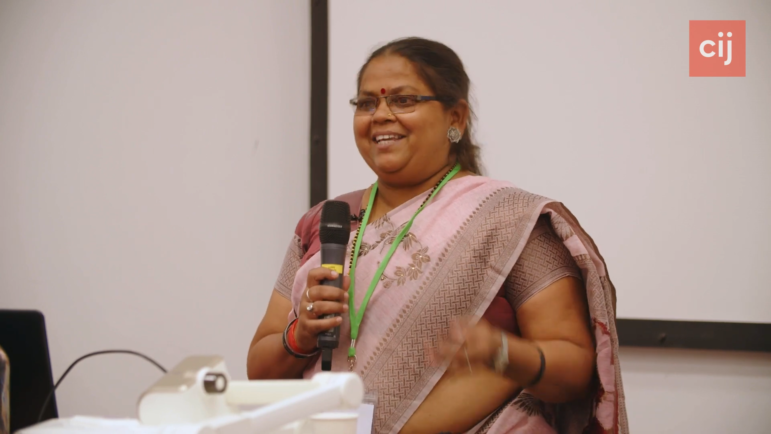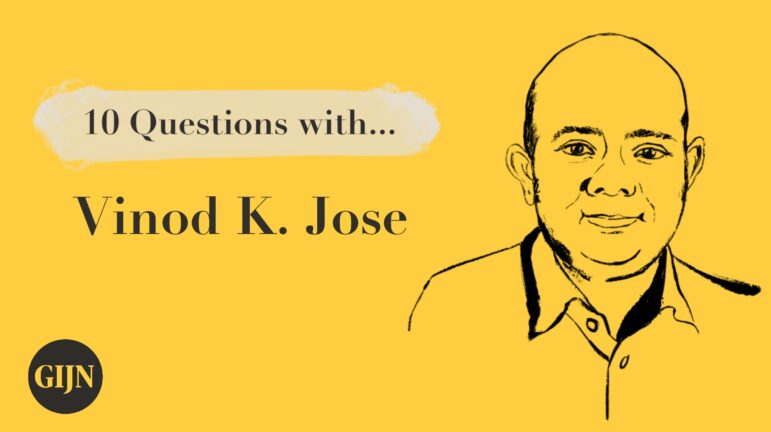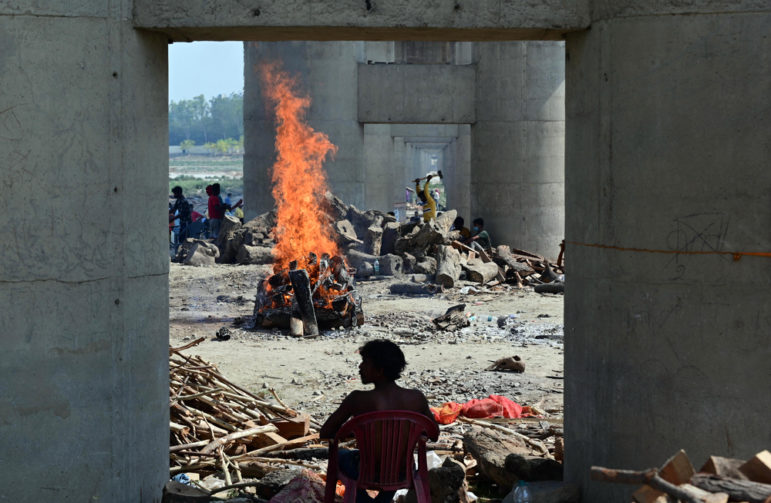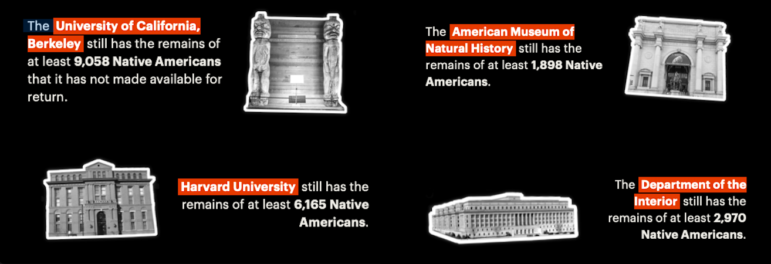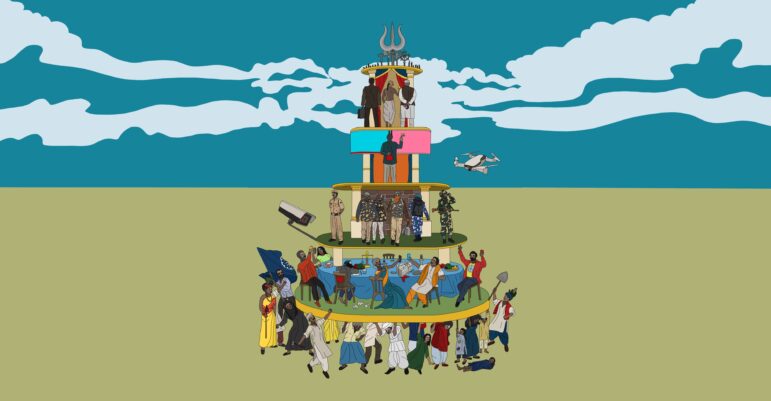

Illustration: Siddhesh Gautam for GIJN
Guide to Investigating Caste
Read this article in
If you want to understand India, you have to understand the caste system since it dictated individuals’ privileges and restrictions for over 3000 years, making it the very foundation of society. Countries where this ancient system still exists include Nepal, Bangladesh, and Pakistan.
A caste is a hereditary social group whose members traditionally share a hereditary occupation, claim descent from a common mythical ancestor, primarily marry within the community, and generally keep social interactions outside the group to a minimum, if allowing them at all.
Meanwhile, castes are not static – they have evolved into subcastes and even merged with other castes over time.
While most visible among Hindus due to religious sanction in scriptures and continued adherence to caste rules, castes exist across all religions in India since converts from Hinduism carried their social practices with them.
Investigating caste issues is crucial to understanding India’s socio-economic dynamics and addressing systemic inequalities. Also, during reporting, understanding the caste system can offer insight into understanding an individual’s social background and their politics, economic standing and viewpoint.
This reporting guide provides insight into the caste system’s complexities and offers practical advice on reporting caste-related stories effectively. The information here can help journalists working in India, but also those who work in countries with a significant Indian diaspora, because the caste system follows Indians into their adopted countries.
Castes in India
In the vast and diverse India of 1.4 billion people, caste characteristics vary by region, language, and religion, demonstrating their sociological nature. For example, dietary practices within a single caste may differ geographically.
The castes are structured hierarchically, with each caste having a rank in the social order, with Brahmins on top. This hierarchy determines an individual’s social advantages such as access to power. The lower the caste on the social ranking, the lower the amount of access.
As a result, the caste system serves as a socio-economic indicator, too, reflecting an individual’s wealth, including land ownership, and their access to education, healthcare and housing.
Caste is determined solely by birth and cannot be changed.
- Brahmins are considered traditional custodians of knowledge with control over schools, scriptures, and gods. They are considered priestly classes.
- Kshatriyas were traditionally the warrior class who had access to weapons. Some of the members of this caste are in the Indian military today.
- Vaishyas have long made up the business class, and are often merchants today.
- Shudras were traditionally farmers and artisans: Their role was to serve the top three castes.
There are also thousands of sub-castes for each caste, and they can be found here: Other Backward Classes and subcastes, and Scheduled Castes and subcastes. Brahmins, Kshatriyas and Vaishyas are also subdivided into several castes, but because the Indian state doesn’t count them, there’s no official data detailing them. However, Brahmin castes were profiled by Bhimrao Ramji Ambedkar, India’s first justice minister and one of the architects of the Indian Constitution, in his essay, The Curse of Caste.
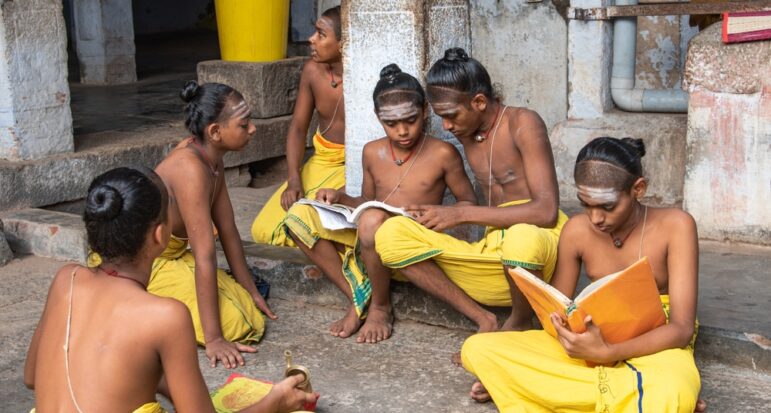
Young Brahmin students studying at a temple in Madurai, India. Members of the Brahmin caste are considered custodians of India’s schools, scriptures, and religion. Image: Shutterstock
But outside the four-fold classification, there are Hindus called Panchamas or the Untouchables who were shunned by members of the other castes for their “untouchability.” Officially known as Scheduled Castes today, they traditionally served providing services such as laundry, shoemaking, brewing, laboring, etc. Caste Hindus [Hindus within the four-fold caste system] considered them polluted and would perform purification rituals if they accidentally touched them..
Untouchability varied in its practice, according to region. In some places, even the sight of an Untouchable was considered a bad omen. The Untouchables were not allowed to draw water from public wells, enter or even walk through roads adjacent to Hindu temples, eat with fellow Hindus, or study in schools.
Under British rule, which lasted until 1947, officials removed some of these restrictions on Untouchables: They opened public wells to all Indians, recruited Untouchables into the British Army and opened schools to everyone. The Indian Constitution also outlawed discrimination against them and now offers those outside of the caste system protection. But the discrimination continues.
Caste, post-independence
In 1950, after the British left, the Indian Constitution outlawed caste discrimination and abolished the practice of Untouchability. Because caste discrimination was so intrinsic to Indian society, the Constitution provided educational, economic, and political protections to castes that were ranked lower in the Hindu social order, to make the opportunity field equal for all citizens. As a result, these former Untouchables were recognized as Scheduled Castes, and besides Scheduled Tribes, are protected in the Constitution, which also required them to be counted in the census.
Other Backward Castes, however, are castes within so-called touchable Hindus whose social rankings were lower. The low social ranking is considered to have caused their social and educational backwardness. but they are not counted in the census. The resistance to tracking the true size of OBCs has traditionally come from upper caste Hindus who are reluctant to reveal that lower castes are a majority of Hindus even though they do not enjoy proportional representation in politics, business, and society
Today, the Indian population is divided into these official classifications for the purpose of affirmative action:
- General Category: This includes the socially privileged castes: Brahmins, Kshatriyas, and Vaishyas. Since they have long had a monopoly over education and employment, the constitution grants these individuals no special privilege.
- Other Backward Classes (OBC): This category includes the Shudras. During the last count in 1980, these individuals included 52 percent of the population and are still granted 27 percent of state jobs and educational slots, which include admission to state colleges or universities as well as appointments to teaching and non-teaching positions at colleges or universities. In principle, the economic standing of a caste group is considered irrelevant in the identification of OBCs. No one knows the updated population of OBCs today since the last count, and the only existing one, from 1980, as no government, since the British has ever performed a census count of all castes. The ruling parties claim the caste census is a tool to divide Hindus and a construction of the British colonial government. The caste census has been a demand for lower castes and Dalits. It was a second backward classes commission that determined OBCs’ estimated population to 52% in 1980, whose report was finally implemented in 1991. One hundred years after the last caste census, the Modi government announced in May 2025 that it would count castes in its next census.
- Scheduled Castes (SC) made up 16.6 percent of the population, according to the last census report in 2011. The individuals included in this group are those who didn’t belong to any caste and were socially marginalized. This group is granted 15 percent of state jobs and educational slots. It includes only Hindus, Sikhs, and Buddhists.
- Scheduled Tribes (STs) are indigenous people who are outside of the caste system, as they’re considered Animists – those who worship nature. They are granted 7.5 percent of state jobs and education.
SCs, OBCs and STs are protected constitutional classes. OBCs and STs include castes and tribes, respectively, from all religions, including Hindus, Muslims, Christians, Sikhs, and others.
The Indian Constitution includes several provisions to safeguard the interests of Scheduled Castes and Scheduled Tribes, like abolishing Untouchability, prohibiting human trafficking and forced labor, and ensuring access to Hindu temples. Scheduled Castes were often forced by landlords or upper caste individuals to work against their will as bonded laborers.
The caste system created a monopoly of the top three castes in education and economic fields.
Therefore, under the Constitution, a certain number of seats in legislative bodies are reserved for the protected groups, SCs and STs. There are also specific laws and measures to protect these groups from violence and discrimination. For example, there are special courts set up in order to expedite cases of caste discrimination and to provide compensation and assistance to victims.
At the same time, the law also includes several safeguards to protect the lower castes, such as a ban on human trafficking and forced labor. Scheduled Castes, for example, were often forced by members of the upper castes to work as bonded laborers, now considered a form of slavery.
Protection of the “poorer” upper caste individuals: In 2019, the Indian government amended the constitution to introduce the concept of economic backwardness, to extend affirmative action and the quota system to those in the upper castes if they are deemed to be less economically advantaged. The new classification was called Economic Weaker Sections (EWS) and includes the “poorer” upper caste individuals who, critics say, may earn almost four times the official poverty rate, but get 10 percent of state jobs and educational slots reserved for them.
What to Investigate
Although India’s Constitution now grants the lower and middle castes certain advantages and protect them, inequalities persist. Here are some stories for journalists to dig into:
Diversity of Government Jobs: The government agencies are required to hire at least 49.5 percent of their staff from the three protected classes. Despite this mandate, government agencies continue to remain strongholds of the upper castes. One thing to examine is how the hiring is done.
Caste Violence: Despite special laws to protect SC and ST individuals, India records more than 50,000 cases of caste violence annually against both communities. Journalists can report on how this violence erupts, how the perpetrators are held accountable, if at all, and whether the victims are compensated.
Development of Lower Castes: Each government ministry and department is required to spend 15 percent for SCs and 7.5 percent for STs of their total outlays, on the development of education, health, sanitation, housing, electrification, road connectivity and mobile/internet connectivity, access to clean water, professional development, etc. Journalists should look into whether these requirements are met or have an impact on the caste.
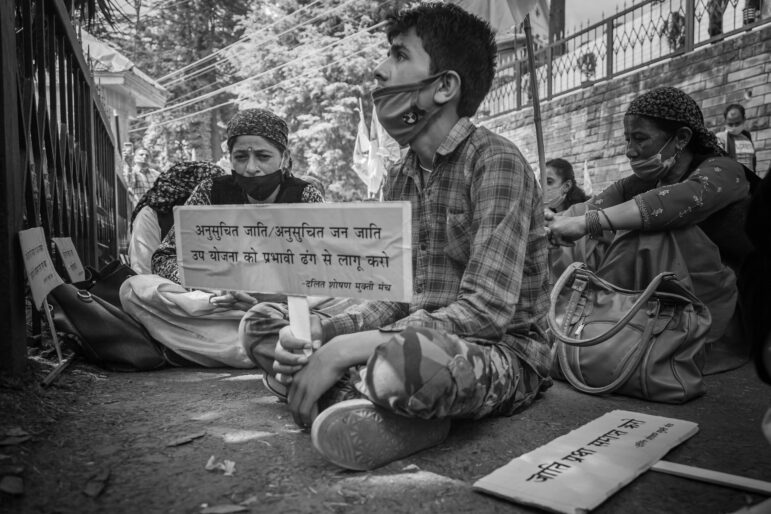
Demonstrators at a 2020 protest outside the legislative assemble of the state of Himachal Pradesh, seeking better implementation of government benefits for Scheduled Castes and Scheduled Tribes. Image: Shutterstock.
Socio-economic Development of Tribal Villages: The federal government mandated the development of more than 36,400 tribal villages, with a focus on health, education, employment, housing, road connectivity, etc. Journalists can investigate the progress of these mandates.
Socio-economic Development of Dalit villages: The caste system forces Scheduled Castes to settle in villages with infertile land. To fulfill the constitutional mandate, the central government runs a Development Scheme to promote the socio-economic development of villages with more than 40 percent of its residents who are part of the Scheduled Caste. The scheme includes the infrastructure development of 11,500 Dalit villages, skill development,and special tutoring for SC students. The scheme is designed, implemented, and monitored by local self-governance units, although audits of the scheme are rarely conducted.
Residential Schools for Lower Castes: The government is required to build residential schools for SC and ST children because they often face discrimination at regular schools. A promising story would be to investigate whether lower caste children have access to these schools, their dropout rates, and their ability to access higher education.
Financial Assistance for OBC, SC, and ST students: The Indian government is required by the constitution to provide financial incentives for primary and higher education for protected classes. There is, however, no transparency, regarding the number of actual beneficiaries of such programs or whether the funding actually reaches the students. Journalists could investigate these schemes to shed light on whether they are working.
Rehabilitation of Manual Scavengers: Sanitation work, referred to as “Safai Karmachari,” was traditionally a caste-based occupation in India, done solely by Dalits. Although the constitution provides equal opportunity now, Dalits continue to outnumber other castes in sanitation work. Journalists could look into why.
The government-run non-profit National Safai Karamcharis Finance and Development Corporation (NSKFDC) is supposed to provide help to Scheduled Caste sanitation workers by giving them interest-free loans. According to the last survey by the agency, in April 2018, India still has around more than 58,000 manual scavengers, workers who physically clean dry latrines with their bare hands. Reporting on these workers’ situation and why the state hasn’t managed to train them for other jobs could make for a good investigation.
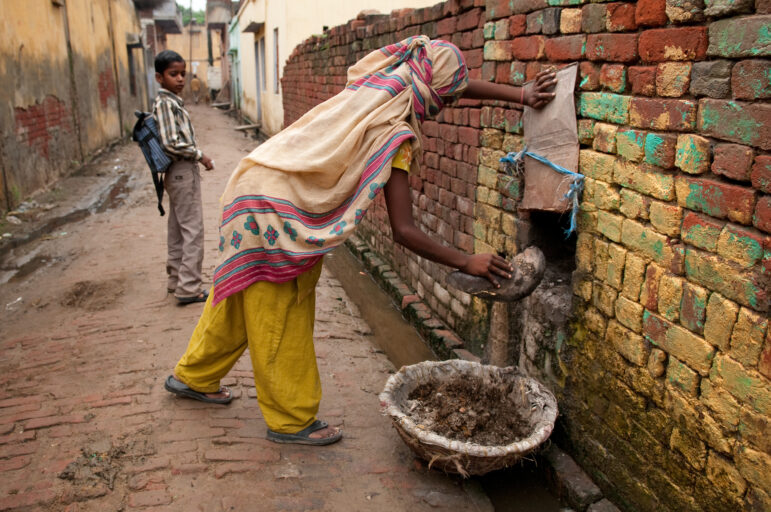
In this 2010 file photo, an Untouchable woman in Panipat, India, works as a manual scavenger, collecting human waste by hand. Though the practice has been officially banned, it still continues in many states. Image: Shutterstock
Tips on Covering Caste Stories
Knowing the caste of a group or an individual helps understand the privileges they have had or barriers they have faced, and what has shaped their views today.
Politics
Without understanding the caste system, journalists can’t do effective political reporting in India. Almost every Indian party has separate wings for SC and OBC leaders. Because SCs and OBCs constitute the majority population in India, their separate cells woo their fellow caste voters, even though the parties’ traditional voters could be from the upper castes, for example.
For instance, the following story analyzes the state politics through caste: The Brahmin-Kayastha hegemony has overridden political social justice in Odisha. It explains how the two upper castes have dominated Odisha’s politics for decades and as a result, never provided assistance to caste-oppressed communities, which made up 40 percent of the population.
Knowing an individual’s or community’s caste can also help predict their political affiliation. A liberal upper caste Hindu individual or family is most likely to be voters of the centrist Indian National Congress. Similarly, a conservative upper caste Hindu individual or family is very likely to be voters of the right-wing Bharatiya Janata Party or the Indian People’s Party. More affluent OBCs in the Hindi belt will likely be voters of one of the socialist parties, like the Samajwadi Party, Rashtriya Janata Party, or Janata Dal United.
Local institutes, such as the Center for the Study of Developing Societies, are a great source for voter data. According to them, upper caste Hindus are loyal supporters of BJP since independence, while Dalits in Uttar Pradesh, the largest state in India, are supporters of the Bahujan Samaj Party. Yadavs, who belong to the middle caste and are involved in farming, support the socialist parties in Uttar Pradesh and Bihar.
Caste Violence
Caste violence usually involves aggressors from caste Hindus and victims who are from the Scheduled Castes or Scheduled Tribes.
A general trend in Indian media has been that they often name the caste of victims while hiding the caste of the aggressors. Instead, local media often use pronouns such as “dabangg” (loosely translated as bully), which doesn’t give away an attacker’s caste identity. Local newsrooms are not diverse, and upper caste journalists outnumber all other castes, which suggests the presence of an inherent caste bias in coverage of caste violence against SCs and STs. Some media even republish posts of unverified accounts, justifying the violence. In other words, Indian coverage of caste-based violence is often done from the aggressors’ perspective.
A fair and solid story on caste-based violence should reveal the caste identity of the aggressors, investgate the violence, and portray victims as actual people, not just as members of a lower caste. And once the case reaches the court, it should investigate whether there is caste bias in the handling of the case, and of course, the verdict.
The data on caste violence against SCs and STs is collected annually by the National Crimes Records Bureau.
Interviewing a Caste Member
Caste is not visible in one’s color, hair, or other physical features. For a foreigner, there is no social protocol in approaching a member of any caste. People from all castes are equally as likely to engage with journalists and journalists can address anyone without it being seen as disrespectful.
If at all, social protocols may exist for Scheduled Caste journalists approaching orthodox Hindus. Because the Hindu caste system considers SC individuals polluted, orthodox caste Hindus may take offense at being approached or questioned by them. SC journalists should also be cautious while covering Hindu temples. Historically, Hindu temples prohibited SCs from entering and the prohibition is still observed at certain temples in India.
When reporting on tribes, remember that only certain hill tribes in India have tribal leaders to speak on behalf of their people. Stiil, there are no social restrictions on approaching any individual from any tribe.
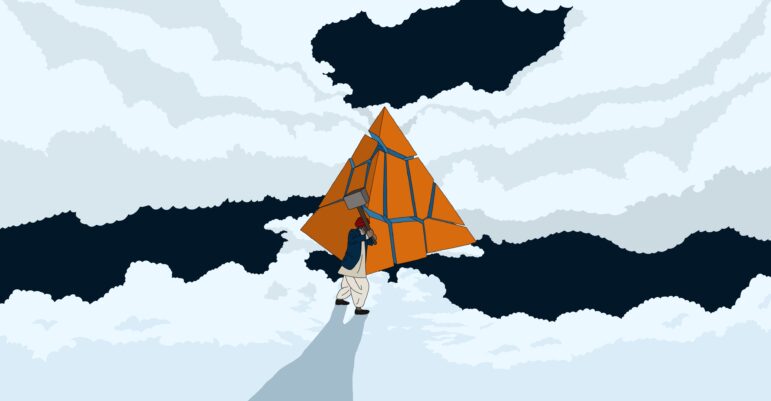
Image: Siddhesh Gautam for GIJN
Data and Resources
Caste Data
Castes were counted only by the British, as they considered them the foundation of Indian society and an important tool for measuring changes in the social strata. Under British rule, the census department counted and classified the Indian population based on caste, race, and tribe every 10 years. Even today, academics and lawyers refer to those reports whenever a dispute arises over a community getting certain legal benefits or when a new class evolves out of an existing one, and requests benefits.
The only census reports on castes, which give a comprehensive ethnological and anthropological analysis, are from the early 20th century and the British rule. Here are the links to the different years: 1901, 1911, and 1931.
Post Independence
Some analysts believe that India has never done a census including all castes post-independence because the Indian ruling elite are made up primarily of the upper castes, and a census would expose their monopoly on the political space.
Instead, the Census of India Office, a department under the Home Ministry, counts the entire population but only asks if individuals are members of the two protected groups recognized by the Constitution, the SC and ST.
The state-wise number of castes officially listed as Scheduled Castes is available here. The list hasn’t changed since it was first made in 1936 under British rule.
The only attempt to conduct a caste census since independence took place in 2010, when the government, backed by SC and OBC parties, began the process of counting castes across the country to determine the poverty rate for the distribution of social welfare programs. The census included a socio-economic survey containing information such as household income, land ownership, and government jobs. The government never officially released the caste data. Only, part of the survey was released in relation to SC and ST. It remains an important dataset to this day.
Now called the Socio-Economic and Caste Census (SECC), it provides detailed data on rural SC and ST households using various parameters including income distribution, housing type, employment sources, asset ownership, and social vulnerabilities.
Of 28 states in India, the state of Bihar became the first and only to count and release caste data, in 2023. The survey revealed disparities in income, education, housing, and jobs, highlighting how upper castes hold a disproportionate share of resources relative to their share of the population.
Diversity Data of Government Jobs
By law, all government agencies must reserve 15% seats of the seats for Scheduled Castes (the former Untouchables), 7.5% for Scheduled Tribes (aboriginals), and 27% for Other Backward Classes.
However, it is difficult to verify if this actually happens in practice. Part of the problem is that the government rarely releases data voluntarily.
Still, some data exists via periodic reports from the Parliamentary Standing Committee on the Welfare of Scheduled Castes and Scheduled Tribes, which examine the diversity within government departments.
There are also official reports on diversity at public universities, engineering, management, medical institutes, and government-run schools. Finally, there are surveys on diversity in India’s federal agencies and at financial institutions.
Data on Caste Violence
The National Crime Records Bureau is a government agency that publishes data on crimes committed across the country. These include those committed against SCs and STs.
The Ministry of Social Justice & Empowerment (MoSJ) prepares annual reports on the administration of justice in cases of caste violence. These reports examine the functioning of special courts created to expedite cases of caste violence, the appointment of public prosecutors in these cases, the treatment of victims, and the operation of state oversight committees to monitor such cases.
The ministry also prepares annual reports on the implementation of the Protection of Civil Rights Act, a law that aims to eradicate the practice of untouchability and ensure equal rights for all citizens. These reports also examine the functioning of institutional mechanisms created to prevent caste discrimination and untouchability.
There are also annual reports from the National Commission for Scheduled Castes (NCSC), a government body that monitors protection and welfare of SCs. It includes reports on atrocities committed against SCs, bias in scholarship quota programs.
Data on Socio-economic Development of Scheduled Castes and Scheduled Tribes
There’s plenty of data on the lower castes available. For example, in the country’s annual budget document, journalists can see how much of the national expenditure has been allocated for the SC and other castes. Under the law, the federal government is required to spend 15 percent for SC and 7.5 percent for ST, respectively.
- Search for “welfare of scheduled castes/scheduled tribes” on the Indian government’s open-data platform to find data sets related to financial allocations for various projects, literacy rates and the castes’ representation in government, along with other information.
Guidelines clarifying the budget allocation for SC can be found here. These guidelines can provide a baseline to hold the government accountable. Other resources include:
- The Parliamentary Committee of Welfare of Scheduled Castes/Scheduled Tribes
- The annual reports from the National Commission for Scheduled Tribes (NCST), a body that supervises the protection and welfare of scheduled tribes.
Additional Data:
- Here’s a list of the number of SC villages, by state, identified for financial grant under a policy that requires the allocation of financial resources and the implementation of targeted programs to promote the socio-economic development and empowerment.
- There is data on the concentration of the SC population within a city block or within a district of a city: Blocks that have more than a 40 percent concentration of SC residents, blocks with more than 40 percent but less than 50 percent, and blocks with more than 50 percent. There is also data on districts with a SC population of more than 40 percent.
- This data shows the number of OBC in each state as per the central list, which is issued by the central government. This determines which communities are eligible for which quotas and benefits.
- This document highlights the literacy rate for SC from the last census conducted by the government in 2011.
- This data provides a state-by-state breakdown of the percentage of the population below the poverty line for the SC and OBC population in the period 2004-2005.
- These annual reports, produced by the National Commission for Backward Classes, provide data on the OBC’ representation in educational institutions, public agencies, financial institutions, and welfare initiatives.
There is also data available for manual scavengers, including the financial allocation for the “rehabilitation” of manual scavengers, progress reports on their self-employment schemes, the distribution of this group per state, and government surveys on the group.
Finally, some of the most comprehensive research on the caste system was done in the early 20th century when British anthropologists and ethnologists tried to understand India’s diverse population for administrative purposes during British rule. Caste was then used as one criteria, along with race and tribe, to classify the Indian population. Their classifications are part of India’s official census reports from that period.
Ambedkar, the former justice minister, wrote the most authoritative work among Indian scholars on the subject.
Organizations Working on Castes
There are lots of government and non-governmental organizations working with the protected castes. These can be a great source for journalists. Here are a few:
National Commission for Scheduled Castes (NCSC) A government body which is tasked with protecting SC from exploitation and promoting their social, political, economic and cultural interests. The NCSC’s website is a central repository of information regarding monitoring and implementation of SC-focused policies and laws via annual reports, special reports, minutes of hearings, meetings of commission and the implementation of quotas in the public sector.
National Commission for Scheduled Tribes (NCST) Another public body that protects ST from exploitation and promotes their interest. The NCST website has information on administrative and legislative reviews on the legal safeguards for the group, development policies of the federal government for ST, grievance hearings, analysis of atrocities against ST and socio-economic development programs.
National Commission for Backward Classes (NCBC) A public body to safeguard the interests of the OBC. NCBC is a great resource for accessing data on the implementation of the quota policy and socio-economic development programs.
National Commission for Safai Karamcharis (NCSK) A government body created for the socio-economic development of manual scavengers and sanitation workers (those who clean septic tanks and sewers). Its annual reports are a great source of information on how many of these individuals are killed on the job and the implementation of laws that protect their rights.
Ministry of Social Justice and Empowerment This is one of the ministries that works as the key agency for the implementation of all the special laws that protect the interests of the lower castes. The publication section on the website offers great data.
Ministry of Tribal Affairs Monitors all the programs and laws meant to safeguard tribals’ interests. The website provides data on ST’ educational, housing, and employment programs.
International Dalit Solidarity Network (IDSN) An international network of human rights activists, development agencies and Dalit solidarity groups which aims to raise awareness on Dalit issues. IDSN is a great source of contemporary studies being done on the caste system.
National Campaign on Dalit Human Rights (NCDHR) A collaboration of human rights activists and academics that continually publishes studies on caste. They also analyze the government’s budget for ST and SC allocations.
Do’s and Don’ts
- Caste identity is embarrassing and shameful for those who are lower ranking, especially members of the SC because their identification with their caste has consequences, for example, discrimination in the workplace or for obtaining housing. A journalist should mention their caste name only after obtaining consent.
- Indian surnames signify caste origins, but they are not uniform among all castes. Lower caste members often use higher caste surnames to hide their caste and project a higher social status. It’s always advisable to ask the caste name of an individual before mentioning their caste.
- Journalists should try to understand the relationship between various caste communities, their power dynamics, a community’s economic dependence on another, and land ownership patterns when analyzing caste violence or in cases of discrimination.
- While reporting on communal violence, for example between Hindus and Muslims, it’s important to mention the caste of the perpetrators, which plays a role. When it isn’t mentioned, it promotes a homogenous identity of Hindus, which isn’t the case. It also furthers upper castes Hindus’ interests against lower castes Hindus.
- The caste system benefits the top three classes: Brahmins, Kshatriyas and Vaishyas in terms of wealth, access to education and political power. This should be mentioned when discussing the disadvantages of lower castes.
Case Studies
From Segregation to Labour, Manu’s Caste Law Governs the Indian Prison System: This story by The Wire India is a deep dive into caste discrimination in India’s prisons. The story highlights how prisoners’ experiences differed based not only on their economic class but also on the caste they belonged to. It shows how this discrimination is even built into prison manuals, which govern how a prison is run. These manuals, for instance, relegate a Dalit prisoner to cleaning toilets and sewers, while prisoners from higher classes, such as Brahmins, are usually assigned jobs, like cooking.
Savarnocracy Uttarakhand: What it takes to build an upper-caste state: Uttarakhand came into being a state of India in 2009 after a decades-long movement by political activists. In the story, reporter Mahesh C Donia revisits the creation of the state from the perspective of caste divisions and discusses how, from its very formation, it is based on upholding discrimination and violence against the scheduled castes, specifically its Dalit population, that have gone unpunished. His questions to officials were not answered.
Additional Resources
There’s very little journalism done on caste because of the absence of oppressed communities in Indian newsrooms. Below are some good resources for those who wish to do a deeper dive into the subject:
- The collected works of Ambedkar, published by the government of India. Origin of Castes and his essays and speeches, From Millions to Fractions, are important works.
- A report by the Parliament, which is a rare official admission of the existence of caste bias throughout the Indian judiciary, all the way to the Supreme Court, is the only government body that doesn’t employ affirmative action in its appointments of judges. The report documents how the lack of diversity in the judiciary means that higher-caste Hindu judges often adjudicate criminal cases with a caste bias. That means the outcome of trials often end up prosecuting SC and exonerating the accused when they are a member of the higher castes.
- This report, by the National Commission of Scheduled Castes, is another official document that acknowledges caste bias within the judiciary. The document includes facts on the lack of diversity within the judicial system, discrimination against SC victims, and caste bias among upper-caste judges.
- Rebels from the Mud houses – Dalits and the Making of the Maoist Revolution in Bihar: This book by George J. Kunnath will help illuminate how the caste system still promotes violence against Dalits. It also explains why Dalits began arming themselves to defend their community against caste violence. The book examines the Dalits’ situation in the 1990s when members of higher-castes orchestrated pogroms against the community.
Editing by GIJN staff: Nikolia Apostolou, Reed Richardson, Deepak Tiwari, and Amel Ghani.
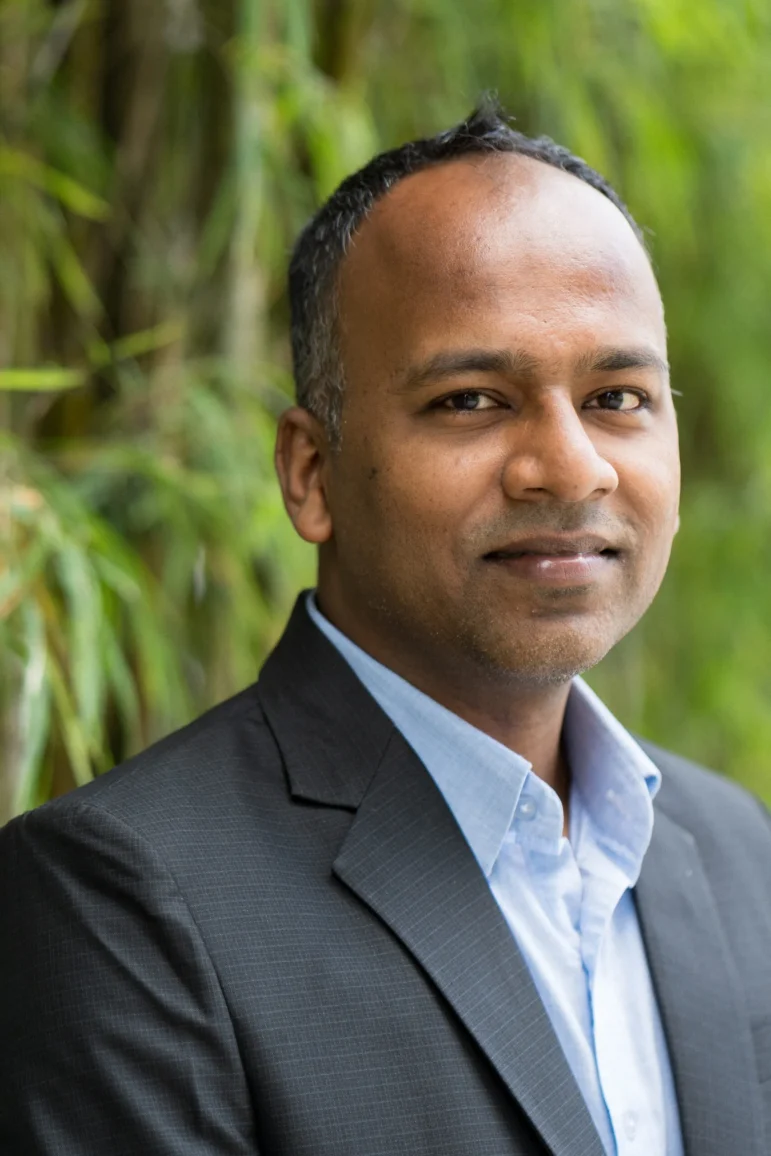 Sagar Choudhary is a staff writer at the Caravan. He writes long-form stories and opinions on politics, governance, society, religion and caste. He is based in Bihar and reports from the hinterlands of central, northern, and eastern India. Sagar is a recipient of the Chevening South Asia Journalism Fellowship 2024 and Asia Journalism Fellowship 2023. He was awarded with the RedInk journalism awards in 2019 and 2020. His story on the intergovernmental aircraft deal between India and France was produced as corroboration in a public interest litigation. Sagar has been a journalist for 14 years. He earlier worked as a crime reporter for a regional daily and a community reporter.
Sagar Choudhary is a staff writer at the Caravan. He writes long-form stories and opinions on politics, governance, society, religion and caste. He is based in Bihar and reports from the hinterlands of central, northern, and eastern India. Sagar is a recipient of the Chevening South Asia Journalism Fellowship 2024 and Asia Journalism Fellowship 2023. He was awarded with the RedInk journalism awards in 2019 and 2020. His story on the intergovernmental aircraft deal between India and France was produced as corroboration in a public interest litigation. Sagar has been a journalist for 14 years. He earlier worked as a crime reporter for a regional daily and a community reporter.

